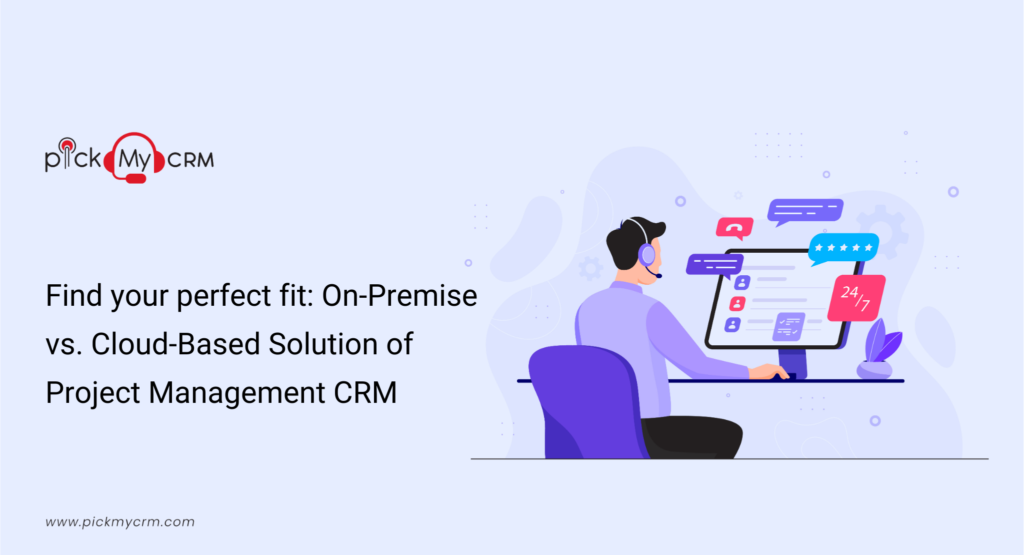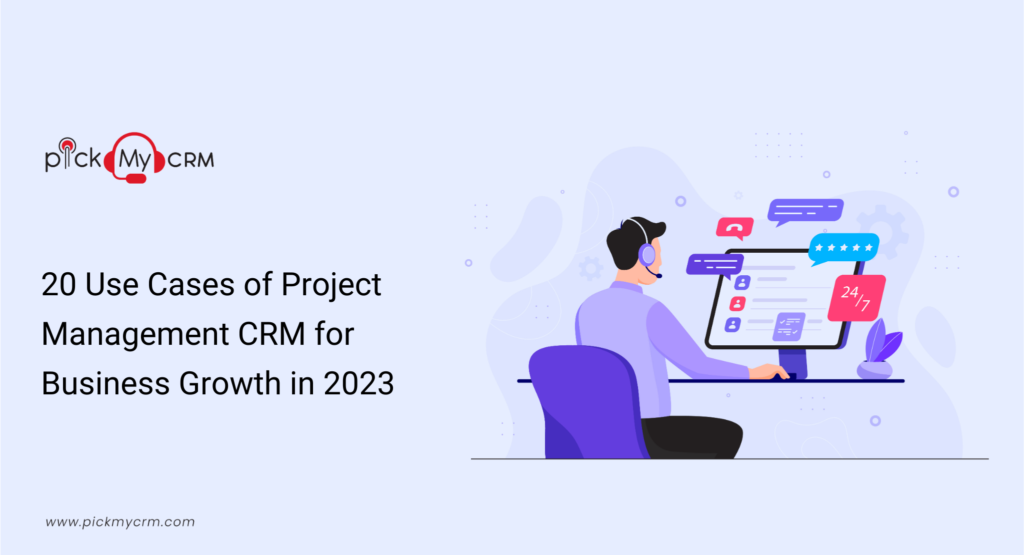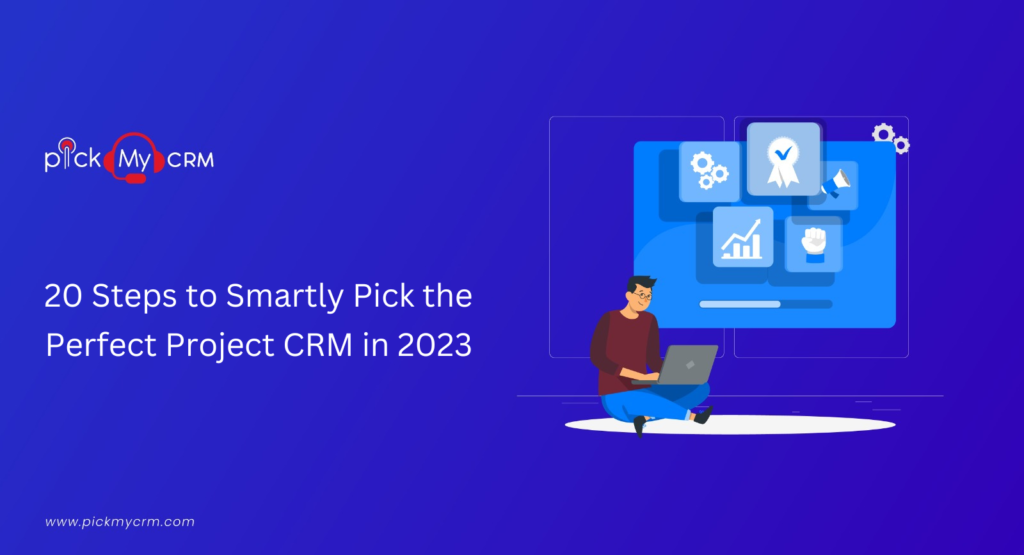On-Premise vs. Cloud-Based Solution of Project Management CRM

Recent Trends and Statistics
Before we delve into the intricacies of on-premise and cloud-based solutions, let's take a quick look at some recent statistics that shed light on the CRM landscape,- Statista forecasts the global CRM software market to reach $40.26 billion by 2023, indicating the rising importance of CRM systems for effective customer management and project oversight.
- In a Gartner survey, 74% of businesses plan a permanent shift to remote work, spotlighting cloud-based CRM solutions for their inherent remote accessibility and collaborative strengths.
Choose On-Premise vs. Cloud-Based Solutions of Project Management CRM
Performance and Reliability
The timeless discussion regarding performance disparities between on-premise and cloud-based solutions presents a complex discourse. On-premise solutions, bolstered by their dedicated hardware, may flaunt stability, yet they frequently demand meticulous performance tuning to rival the cloud's adeptness in managing dynamic workloads. Cloud-based solutions, leveraging the power of distributed resources, excel in managing variability, but concerns over shared resources can sometimes raise questions about consistent performance.Maintenance and Updates
A conflict arises between continuity and convenience when considering maintenance and updates. On-premise systems require meticulous management, necessitating dedicated teams for updates and patches. In the cloud, updates become almost invisible, automatic, and seamless. However, the sway of convenience is countered by the specter of potential downtime during updates, leading to a delicate balancing act between keeping systems current and maintaining operations unhindered.Security Measures
Security, the protector of data integrity, takes on varied aspects within these two domains. On-premise systems, Nestled within an organization's boundaries, provide a tangible feeling of command over security mechanisms. Encryption and access controls are bespoke, crafted to the organization's specifics. Conversely, cloud-based solutions pivot towards encryption at rest and in transit, accompanied by authentication mechanisms. The allure of cloud security lies in compliance standards, a prime mover for industries bound by stringent regulations.Integration Capabilities
Integration, the orchestra of seamless data flow, evolves in varying symphonies across the two paradigms. On-premise systems necessitate a careful choreography of integrations, often reliant on middleware. Cloud-based solutions present an alternative tune, a melody that harmonizes seamlessly through APIs, facilitating swift integration with a myriad of services. This real-time synchronization engenders an ecosystem of interconnected tools, birthing efficiency through cohesive processes.Customization and Personalization
Customization, the artisan's touch in the digital realm, meanders in divergent paths. On-premise solutions bestow the brush of customization with broad strokes, tailoring software to exact needs. On the other hand, cloud-based solutions balance customizability and adaptability, maintaining system coherence while accommodating various business models. The quest for balance is inherent—striving to align standardized frameworks with the distinct hues of individual enterprises.Total Cost of Ownership
Finance, the conductor of strategic endeavors, commands the spotlight. On-premise deployments, marked by their upfront investment and ongoing expenses, can occasionally obscure the lines of cost efficiency. Cloud-based solutions present a symphony of cost-effectiveness, complete with subscription models, transparent pricing, and the capacity to pay for precisely the resources utilized. Calculating the Total Cost of Ownership (TCO) becomes a dance between short-term expenditure and long-term fiscal prudence.Deployment Timeframes
Temporal considerations surface as organizations seek to transition seamlessly. On-premise deployments embody meticulous choreography, laden with complexities that dictate extended timelines. The domain of cloud-based solutions revels in the Rapidity of deployment, often measured in hours or days. The dance of timeframes draws a line between the measured cadence of on-premise implementation and the brisk momentum of cloud-driven expedience.Accessibility and Mobility
In the era of omnipresent connectivity, accessibility, and mobility don the cloak of paramount importance. On-premise systems, bound to physical locations, wrestle with constraints on remote access and real-time updates. The cloud's response to this predicament is a harmony of mobile app integration, enabling work to transcend cubicles and time zones. Mobility becomes more than a luxury; it emerges as a catalyst for unshackled productivity.Data Control and Ownership
Data, the lifeblood of modern enterprises, invokes a discourse on control and ownership. On-premise deployments cloak data within the organization's fortress, nurturing a sense of dominion. Cloud-based solutions, conversely, unfurl data across ethereal landscapes, raising questions about ownership and sovereignty. The journey is one of balancing trust with the assurance of compliance, ensuring data's sanctity amidst shifting paradigms.Backup and Disaster Recovery
In the symphony of data orchestration, the Chapters on backup and disaster recovery resonate profoundly. On-premise systems solicit meticulous backup strategies, weaving layers of redundancy. Cloud-based solutions offer a virtuoso performance in disaster recovery, orchestrated by geographical redundancy, automated backups, and swift restoration. The overture of business continuity echoes louder than ever, bridging the chasm between resilience and disruption.User Experience and Interface
User experience, the maestro of user engagement, ushers in diverse arias in both realms. On-premise solutions, embracing bespoke design, endeavor to align user interfaces with specific organizational requirements. In the cloud, the chorus sings to the tune of user-centric design, harmonizing the needs of diverse users through intuitive interfaces. In the vast theater of productivity, the focal point illuminates the interplay between tailored design and universal intuitiveness.Regulatory Compliance
Regulatory compliance, the sentinel of legality, raises its voice in both on-premise and cloud-based deployments. On-premise systems navigate the labyrinth of compliance by forging their unique path to adherence. Cloud-based solutions derive strength from standardized compliance mechanisms, adeptly tailoring to various regulations. The crescendo of compliance resonates differently, emphasizing the importance of navigating the legal landscape, regardless of the architectural choice.Vendor Lock-In Considerations
The complex dance of vendor relationships traverses intriguing terrain in both paradigms. On-premise systems sometimes foster vendor lock-in, anchoring businesses to specific solutions and vendors. Cloud-based solutions echo a different rhythm, encouraging portability and interoperability. As organizations take center stage in this tango, the choreography of navigating vendor relationships speaks to the delicate art of balance between commitment and adaptability.Industry-specific Implications
The stage upon which project management CRMs play out differs across industries. On-premise solutions resonate more profoundly in industries requiring stringent control, such as finance and healthcare. Cloud-based solutions leverage Agility and Naturally thrive in sectors that embrace swift innovation, such as technology and marketing. The drama of industry-specific implications casts a spotlight on aligning architectural choices with the industry's heartbeat.Where and Why Does the Choice Matter?
Industry Variability: The decision between on-premise and cloud-based Project Management CRMs holds considerable sway across various industries, owing to their distinct needs and priorities.- Regulated Industries: Finance, healthcare, and government prioritize data security and compliance, making on-premise solutions preferable.
- Technology and Creative Sectors: Industries valuing agility and remote work, like tech start-ups and creative agencies, often lean towards cloud-based solutions.
- Sensitive Data: On-premise solutions are ideal for organizations handling sensitive data, ensuring complete control over data security.
- Less Sensitive Data: Cloud-based solutions offer convenience and cost-effectiveness for organizations managing less critical data.
- Global Teams: Cloud-based solutions foster seamless collaboration for globally dispersed teams.
- Local Operations: On-premise solutions provide localized control, ideal for organizations concentrated in specific regions.
- Large Enterprises: Large organizations favor on-premise solutions for meticulous control and integration capabilities.
- Small and Medium-Sized Businesses (SMBs): SMBs opt for cloud-based solutions for simplicity, affordability, and agility.
On-Premise vs. Cloud-Based Solution of Project Management CRM: Making the Right Choice
The decision between on-premise vs. cloud-based CRM solutions hinges on your organization's unique needs and priorities. For a well-informed decision, take into account the following considerations,
- Assess Your Needs: Begin by thoroughly understanding your organization's requirements, including data security, customization, scalability, and collaboration needs.
- Consider Industry Regulations: If your industry is subject to specific compliance regulations, prioritize solutions that align with these requirements.
- Calculate Total Cost of Ownership: Compare the upfront costs, ongoing maintenance expenses, and potential scalability costs of both on-premise and cloud-based options.
- Evaluate Data Sensitivity: Evaluate the sensitivity of the data you intend to manage. On-premise solutions might be warranted for sensitive information, while less critical data could find suitability in cloud storage.
- Assess Geographic Factors: Consider the geographic dispersion of your workforce and clients. When remote teams or clients are spread across diverse locations, opting for cloud-based solutions could enhance collaboration capabilities.
- Consider Organizational Size: Consider the size of your organization and the availability of IT resources. Large enterprises might lean towards on-premise solutions, while SMBs may find cloud-based solutions more cost-effective and convenient.
- Remote Work: Determine whether remote work and collaboration are integral to your business model. Cloud-based CRM systems excel in facilitating remote accessibility.



